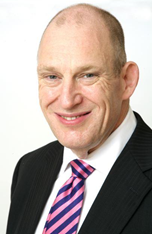Andy Leeser shares his experience of the similarities and differences between NED roles, what he looks for when joining a new board, learning curves and how he stays current. Andy is an experienced Chairman and NED offering a proven track record and a rare set of insights in improving and realising equity value. He has 25 years of experience in financing and refinancing with a range of institutionally funded and quoted companies.
Having served as a non-executive across a wide variety of industries, what have you found to be similar and different for each of these NED roles?
In the final analysis, business is pretty simple – you need to sell goods or services for more than they cost you over a long period of time. It’s no different for any company and the successful ones never lose sight of the basics – whatever the complexities and details of the particular sector happen to be. The great variable is people and how they deal with the associated challenges. Every board I have worked with has had a markedly different character and approach. The job of the NED is understand that character and to help the board focus on the fundamentals.
What do you look for when you join a new board? I.e. what elements draw you to a particular board?
In my individual case I tend to enjoy working with strong, open characters. I find frank discussions are typically much more creative and effective if they are managed well. Obviously it’s also important to feel that the board you are working with is ethically sound (I haven’t come across many that weren’t) and to have ready access to the relevant data. The other thing I look for is a board with a clear sense of challenge and that explicitly wants to achieve some tangible positive change in the mid term. A clear sense of purpose is tremendously important.
What was the biggest learning curve you went through when you first became a non-executive?
The biggest initial challenge was to learn how to operate effectively in a non-executive role having spent much of my prior career as a ‘hands on’ executive. It’s a different style of doing things. The focus is on listening, advising and supporting executive management. Delivered well, this approach can be hugely effective.
How do you ensure that you continue to be current in your non-executive role?
I listen a great deal to the executives and professional advisors that I work with. I enjoy learning and it motivates me. When something changes in a market, the law, or whatever, I will research it. Where I need more help I will go to someone who knows and get up to speed. I think that when you don’t want to learn any more it’s probably time to retire!
If you want to become a non-executive director, we invite you to look into the NED Accelerator Programme by NEDonBoard. We applied years of accumulated knowledge and worked with experienced NEDs and chairs to deliver practical and actionable content to professionals looking to successfully and confidently transition to non-exec roles.




